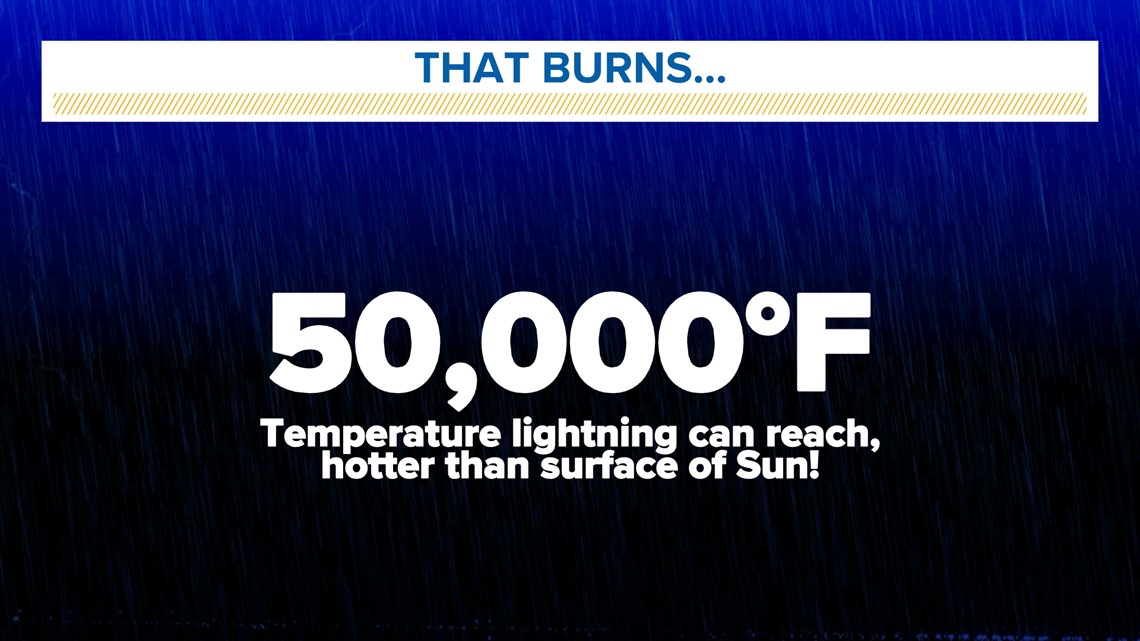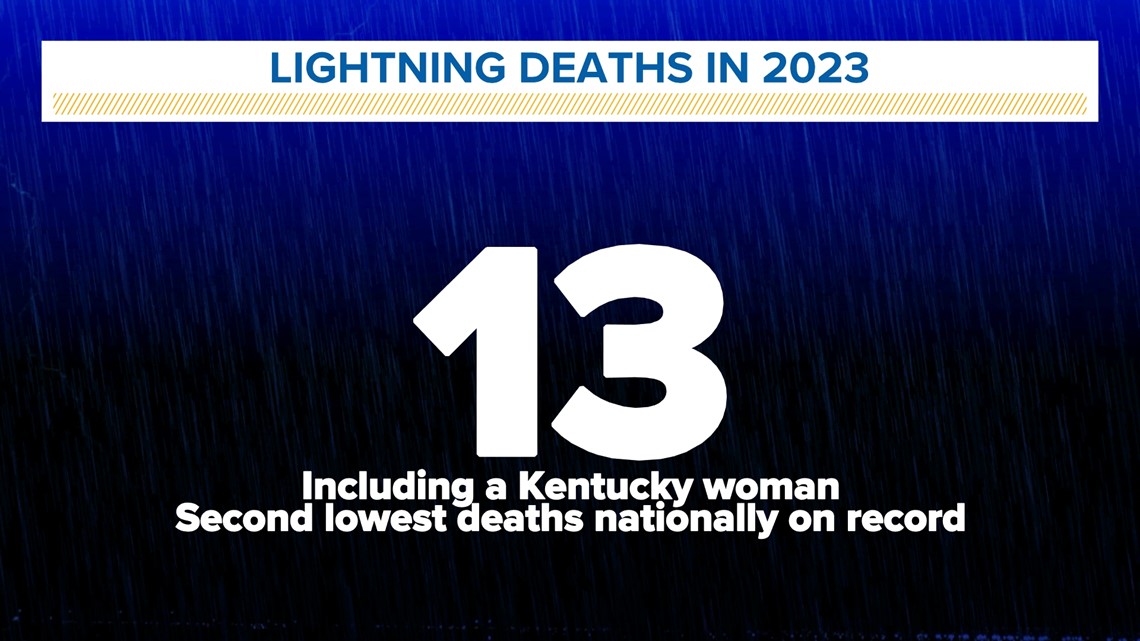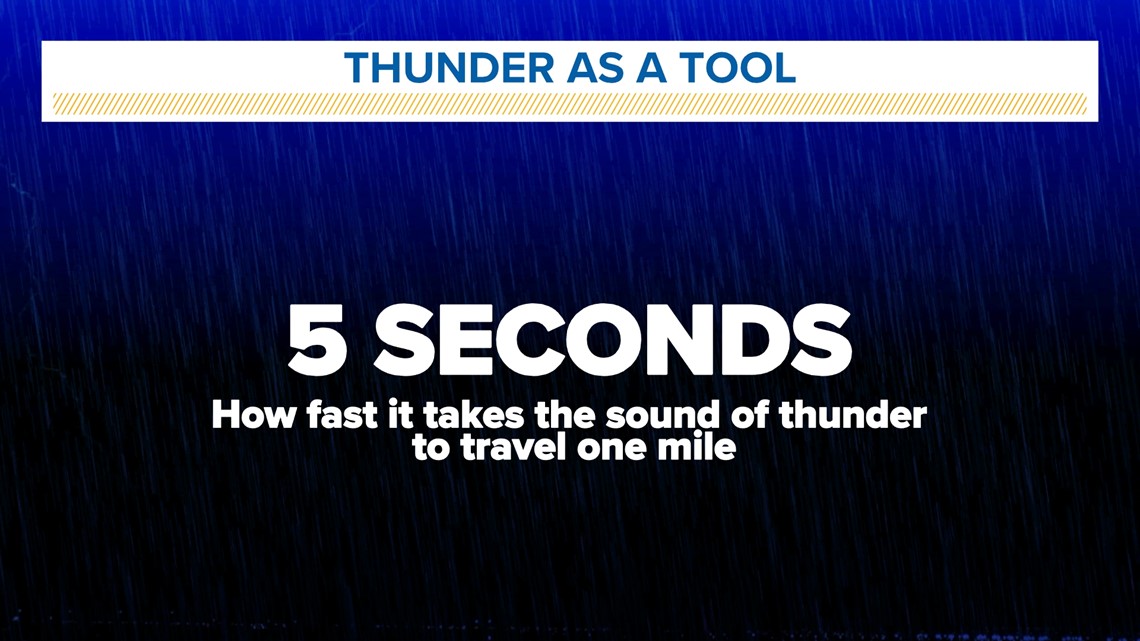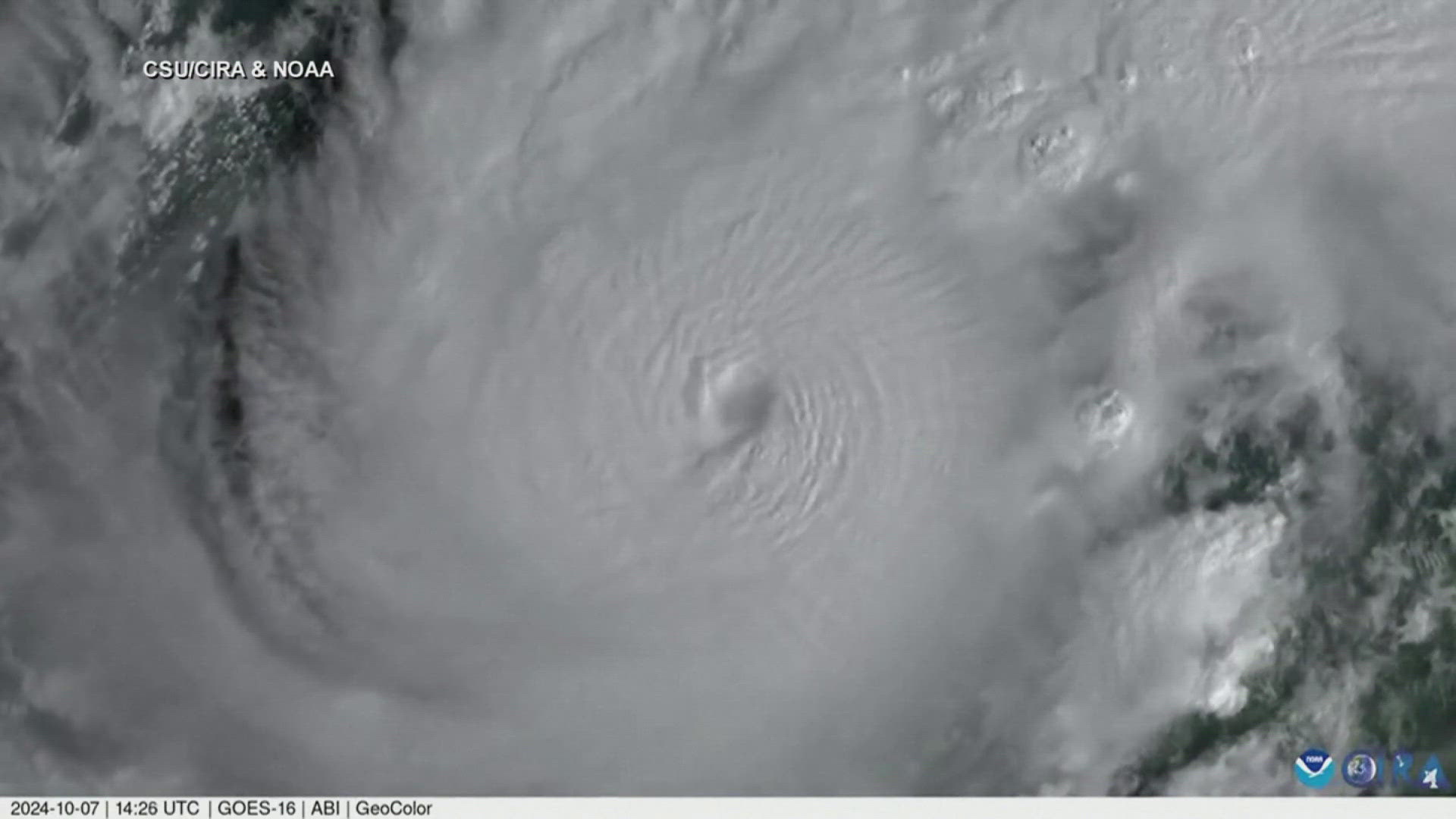LOUISVILLE, Ky. — Lightning is one of the most powerful and dangerous natural phenomena on Earth. A giant spark of static electricity, lightning serves as a type of “neutralizer” for electric charges in the atmosphere.
Lightning has a lot of unique characteristics. For example, despite lightning bolts appearing to be very large in the sky, the actual current of electricity is only a few centimeters wide. The flash makes the bolt appear larger than reality.
It’s also exceptionally hot. Believe it or not, lightning can reach temperatures upwards of 50,000°F. That’s five times hotter than the sun’s surface, and even hotter than lava here on Earth.


You may have heard the saying “lightning never strikes the same place twice.” That's false; lightning can frequently strike one location multiple times during the same storm. Skyscrapers like the Empire State Building are struck by lightning an average of 23 times per year.
Lightning can also strike far away from its parent thunderstorm. Known as a "bolt from the blue," these strikes can land as far as six miles away from the main thunderstorm. They're called "bolts from the blue" because they appear to come out of the clear sky.


Lightning is dangerous. The odds of being struck by lightning in an average 80-year life span is 1 in 15,300. In 2023, 13 people were killed because of lightning. That's actually the second-lowest number of fatalities on record according to the National Lightning Safety Council.
There are many types of lightning. The most common are cloud-to-ground (CTG) and cloud-to-cloud (CTC). There are other rarer electric phenomena that come from thunderstorms under very specific conditions. Known as transient luminous events, these forms of lightning include red sprites, blue jets, and green elves.


Another type of lightning is called heat lightning. You may have heard that term before, but it's only the light produced from a distance storm whose bolt you can't see and thunder you can't hear.
We can't mention lightning without mentioning thunder.
How does it form? When lightning is formed, the air around it becomes super-heated and expands the air outward at insanely fast speeds, then cools fast, too. The rapid expansion and contraction of the air produces the sound waves that create thunder.
Since sound moves slower than light, you’ll usually see lightning before you hear thunder. It takes approximately five seconds for the sound of thunder to travel one mile. That means yes, you can use thunder to estimate how far away a lightning strike was.


Count the time from the moment you see the flash of lightning until you hear thunder and divide by 5. So, 5 seconds = 1 mile, 15 seconds = 3 miles, and so on. Generally, the maximum distance you can hear thunder is 25 miles.
Remember this saying: when thunder roars, head indoors.
►Contact meteorologist Alden German at AGerman@whas11.com or on Facebook or Twitter
►Make it easy to keep up-to-date with more stories like this. Download the WHAS11 News app now. For Apple or Android users.
Have a news tip? Email assign@whas11.com, or visit our Facebook page or Twitter feed.
RELATED VIDEO



